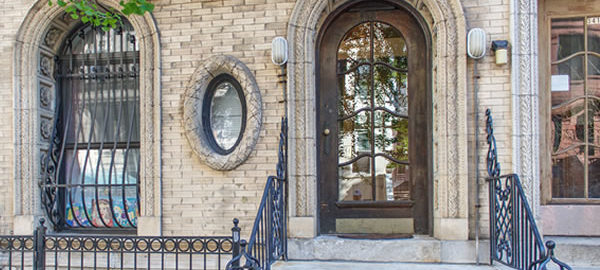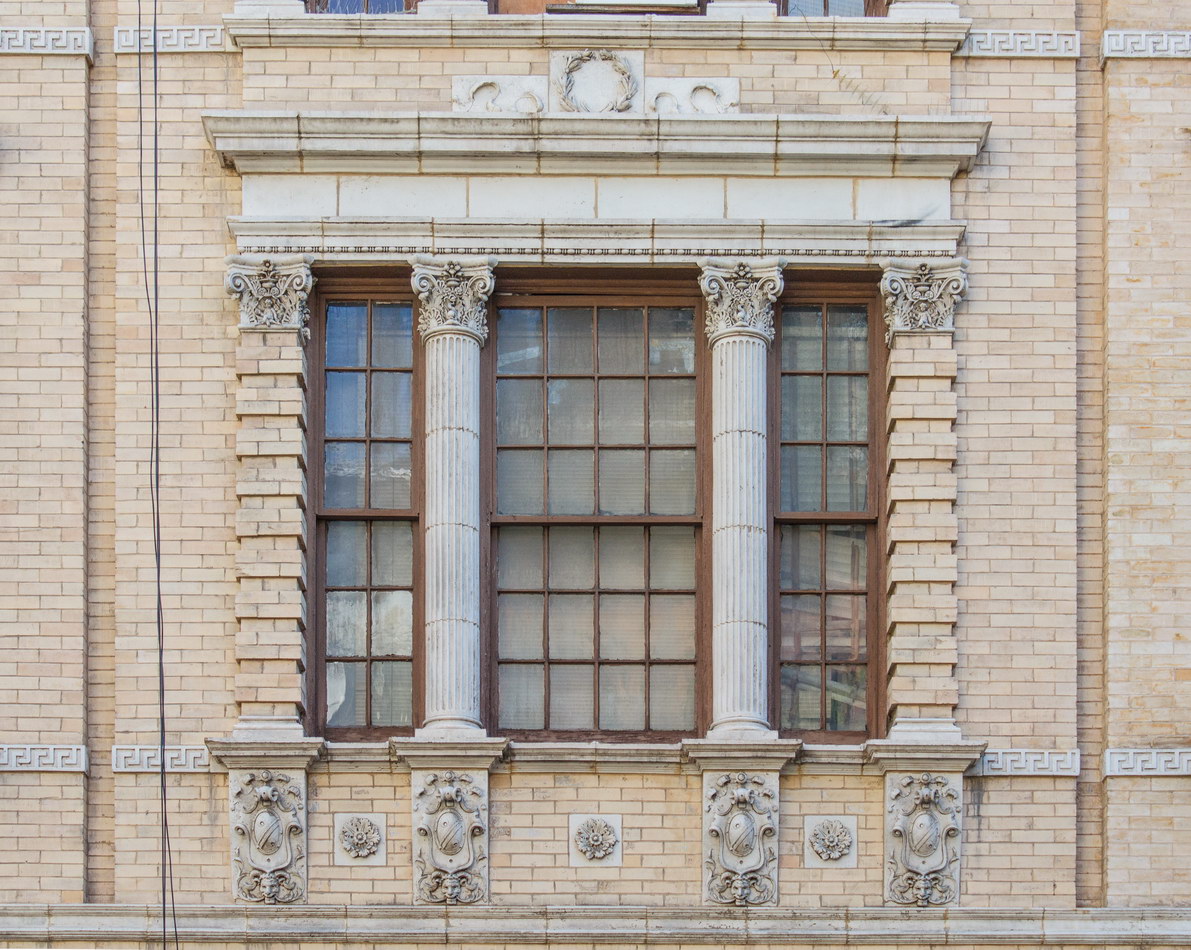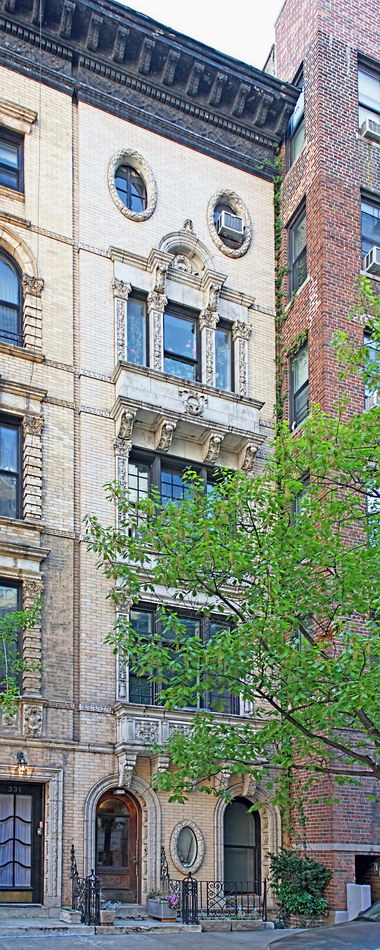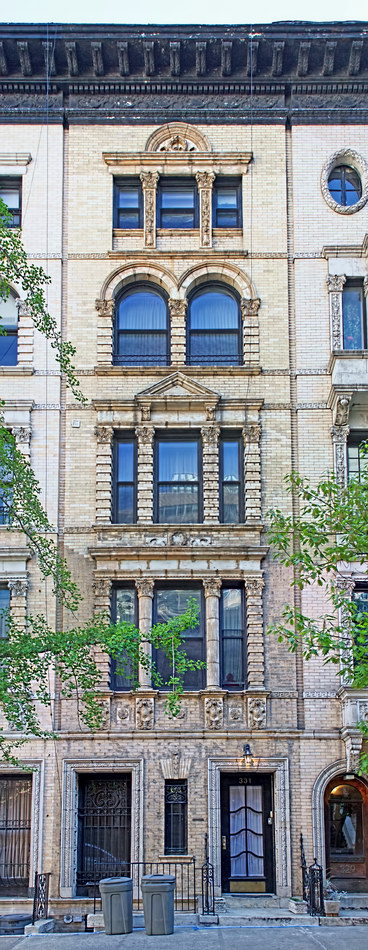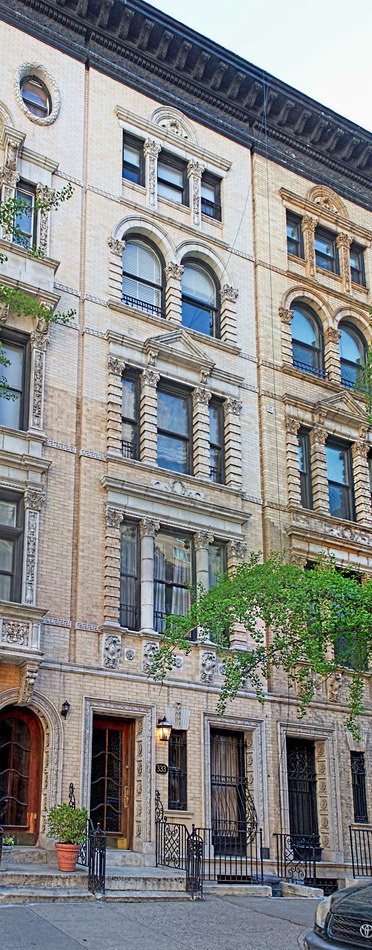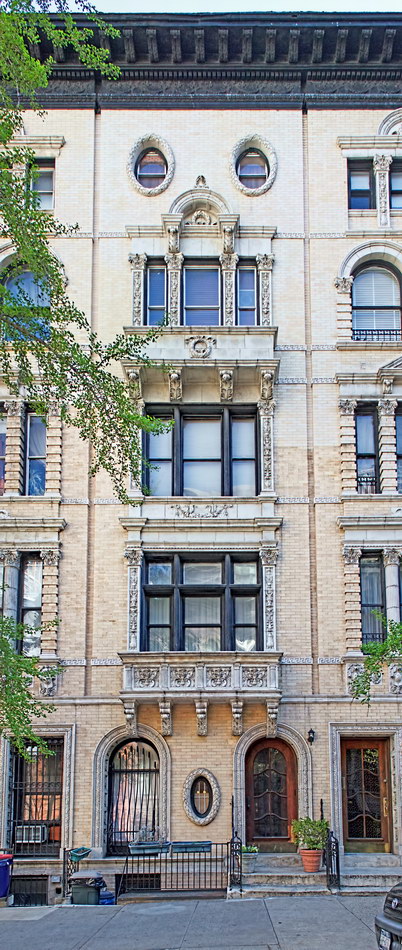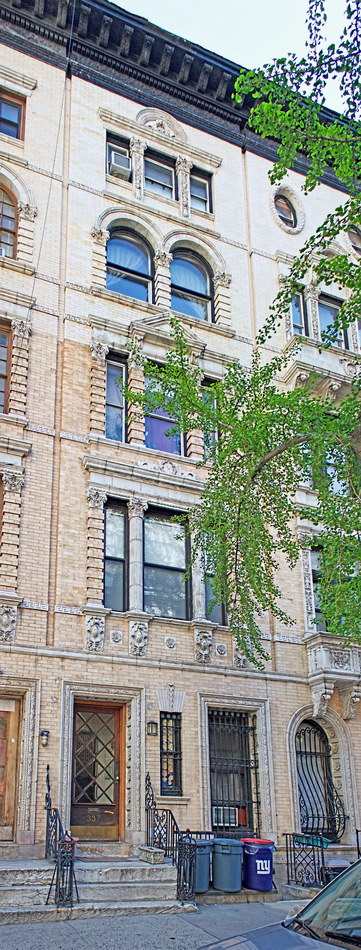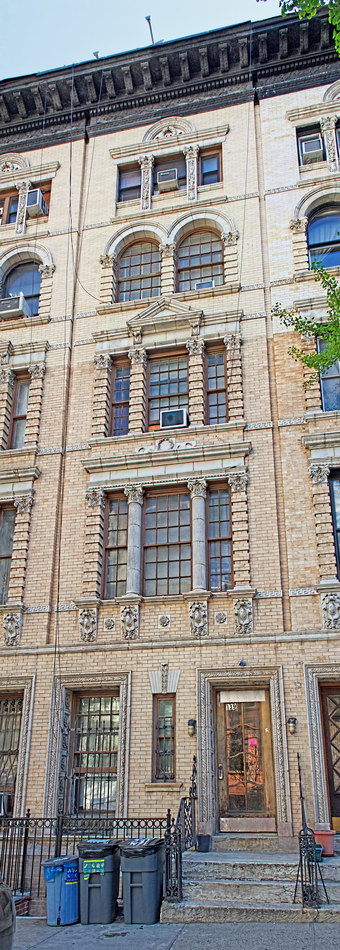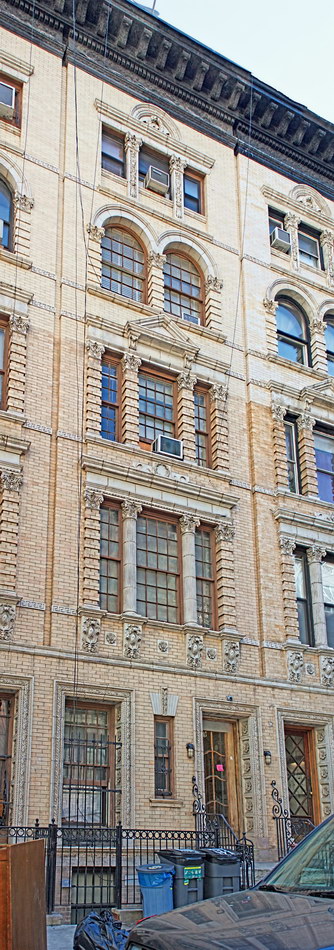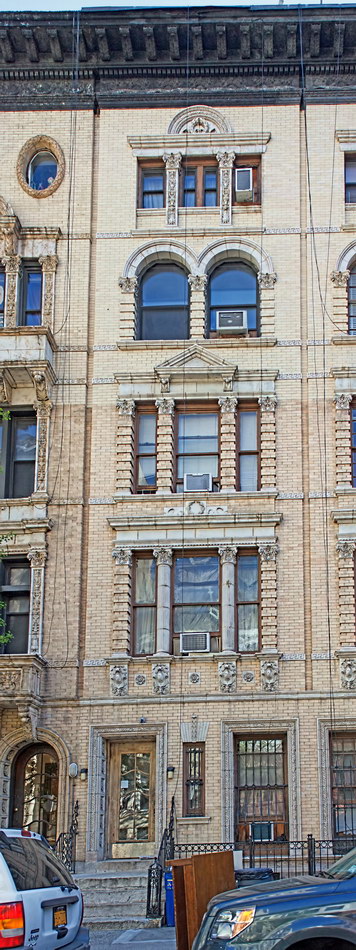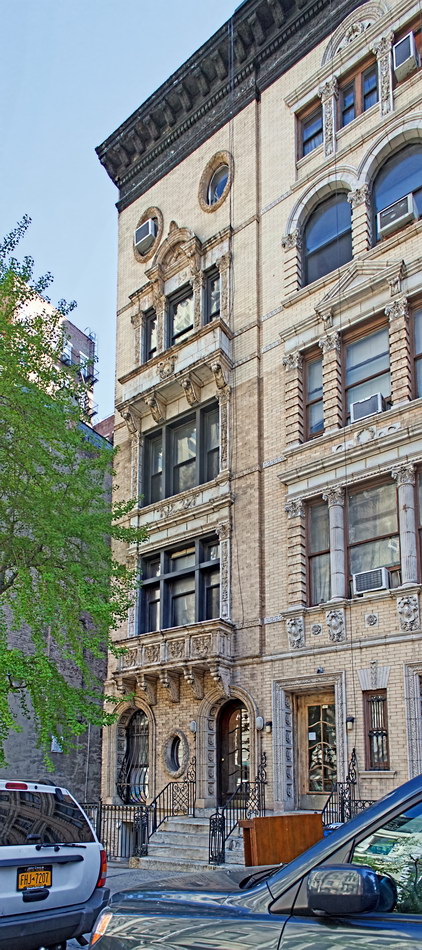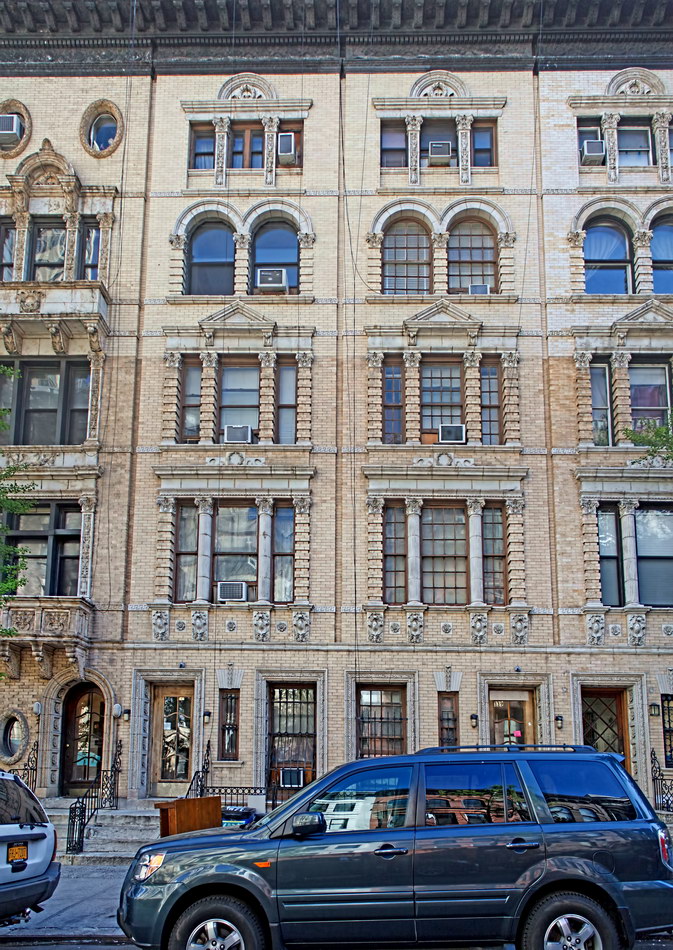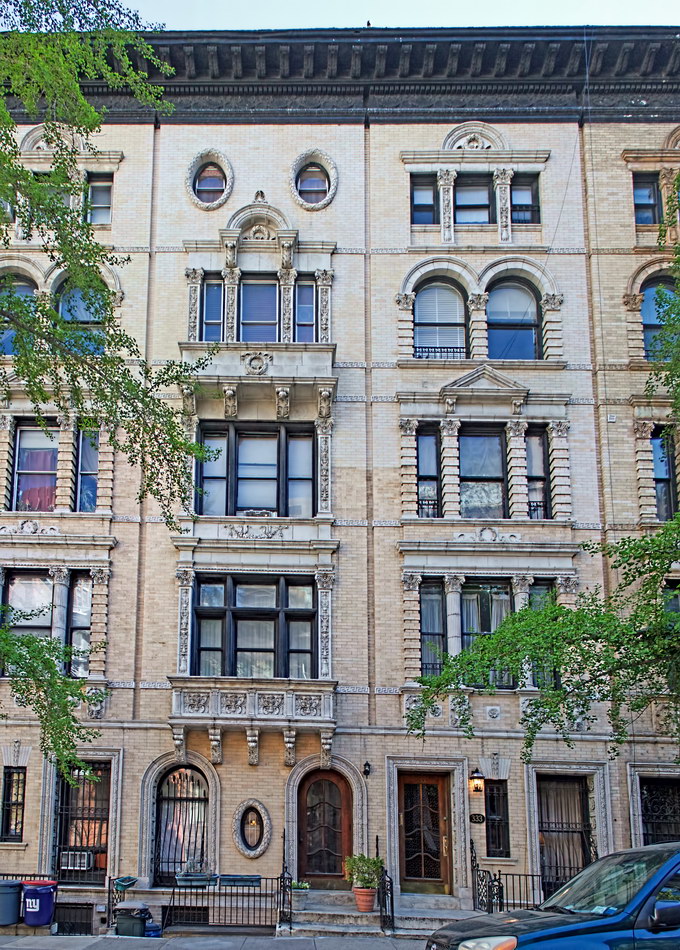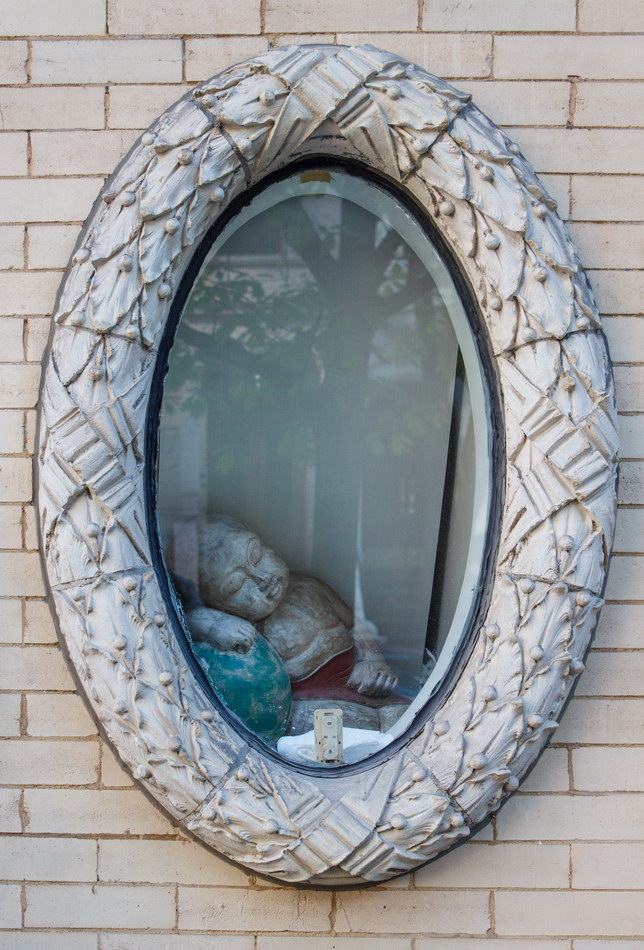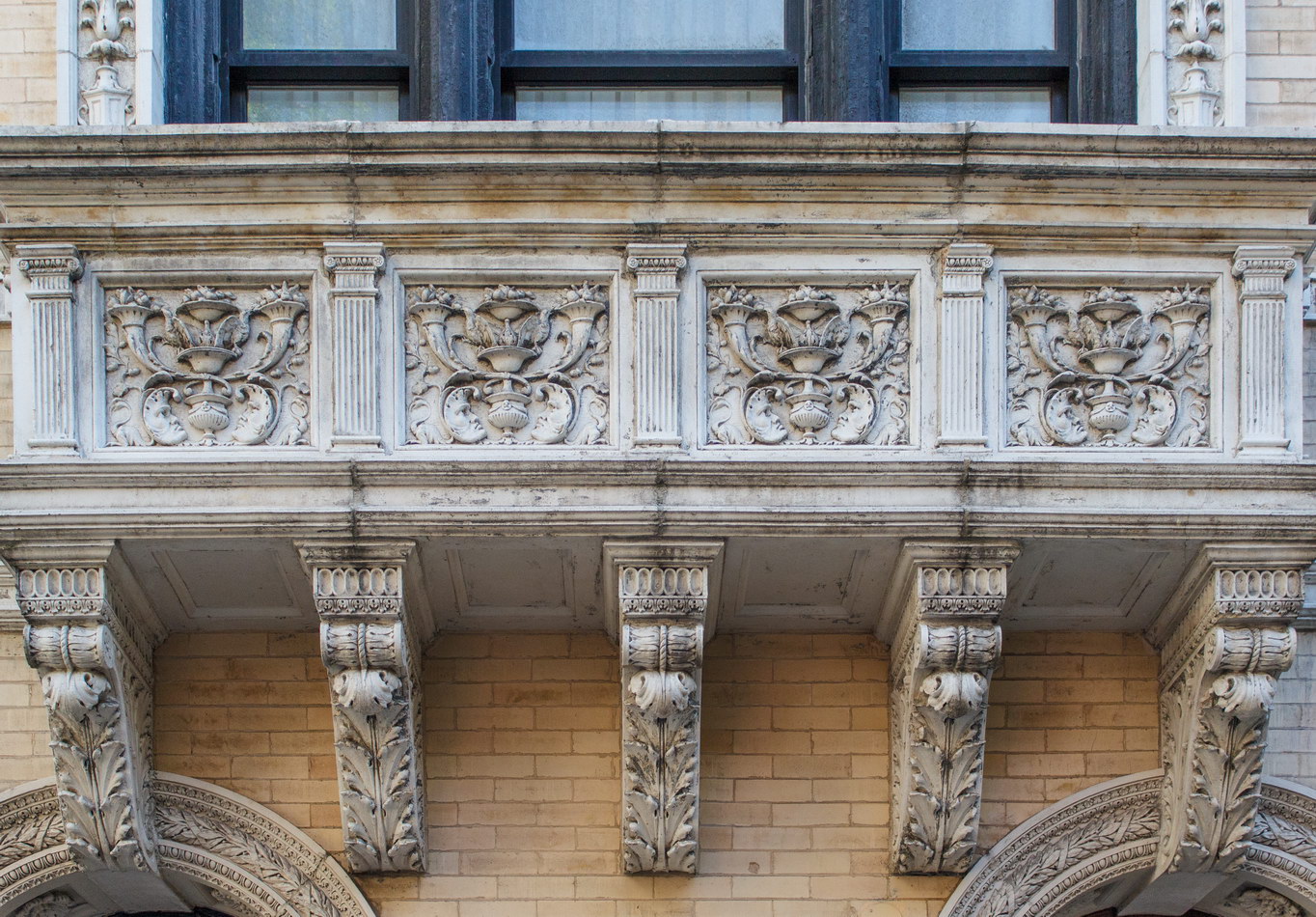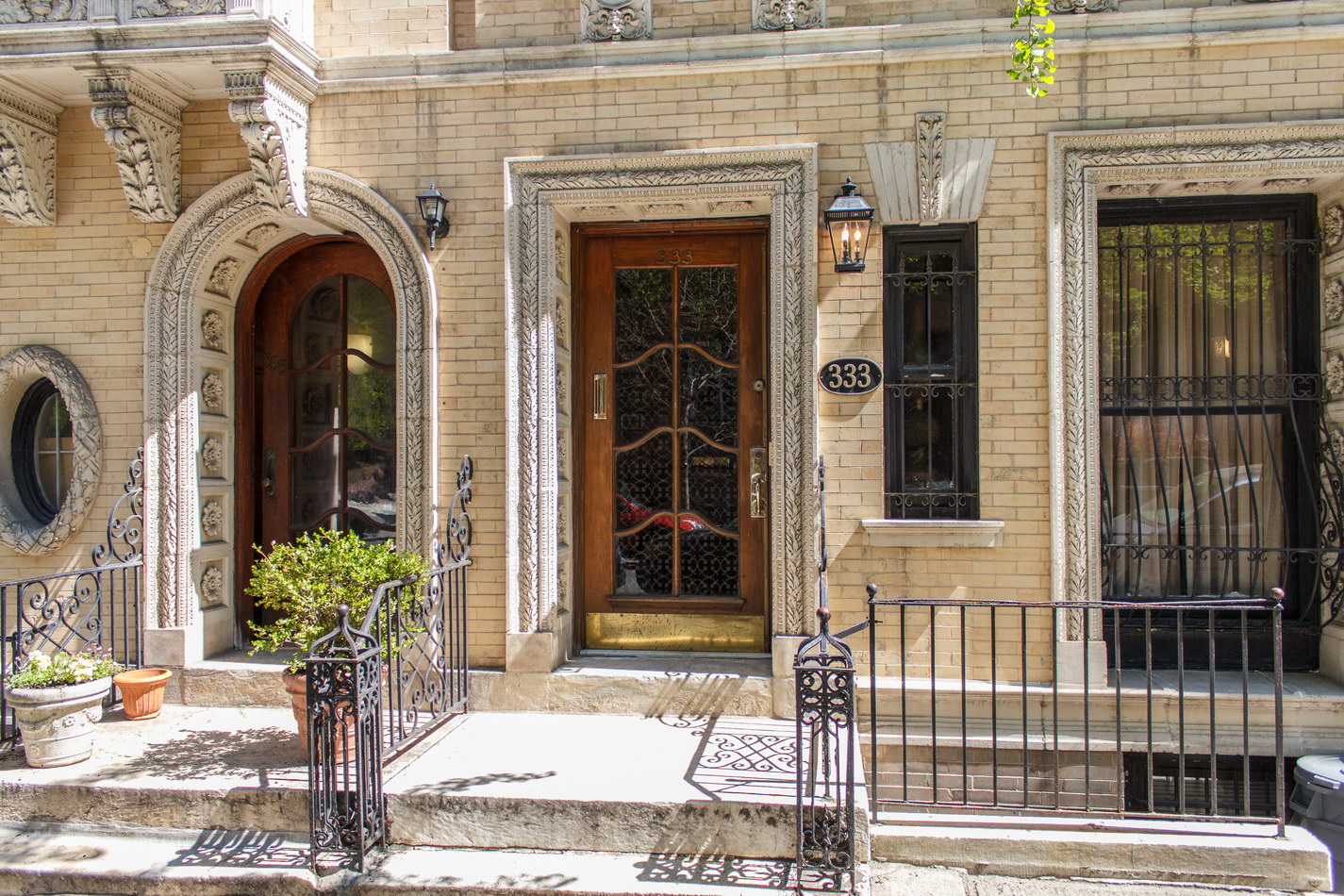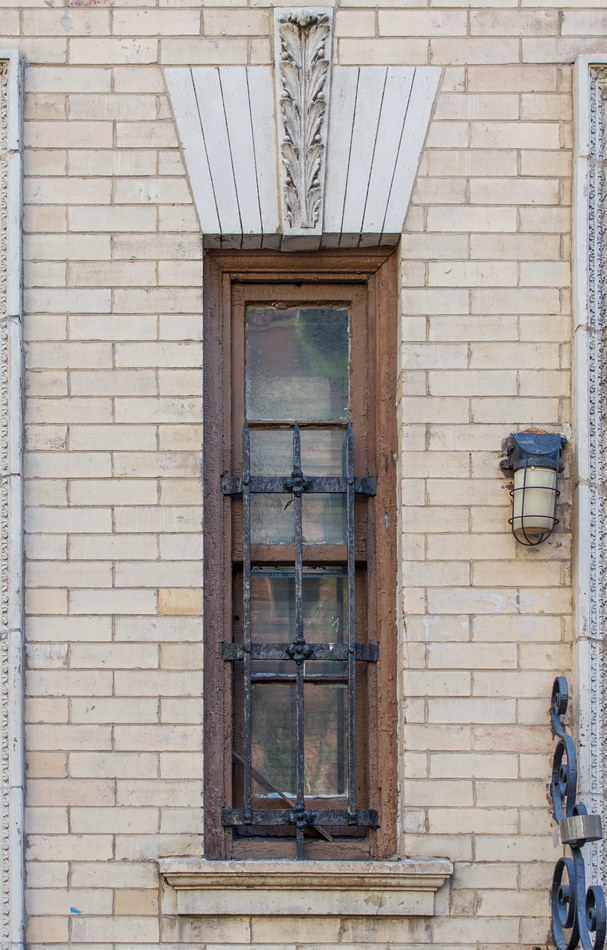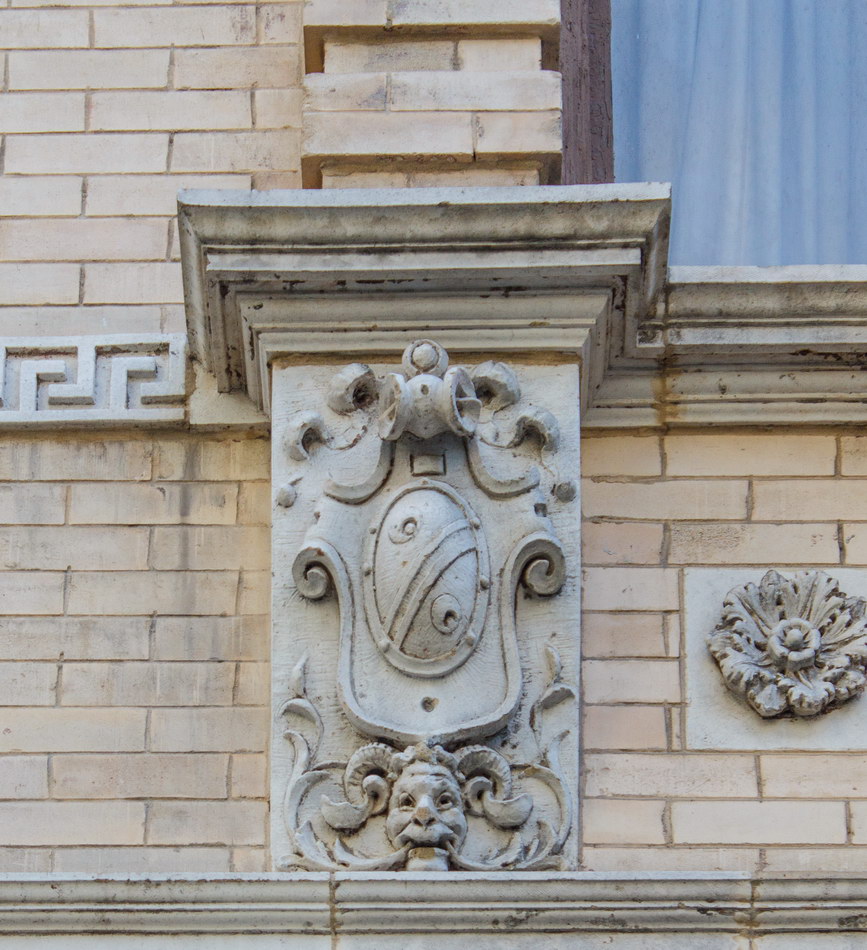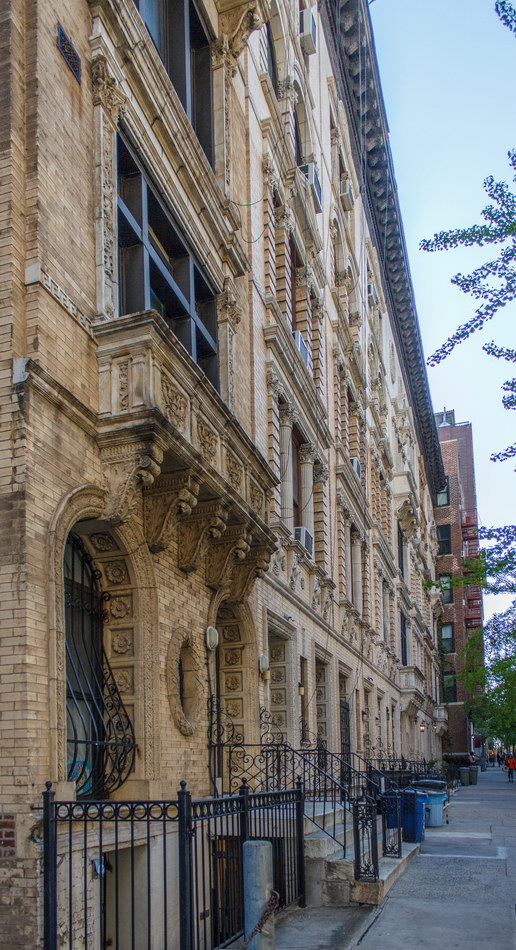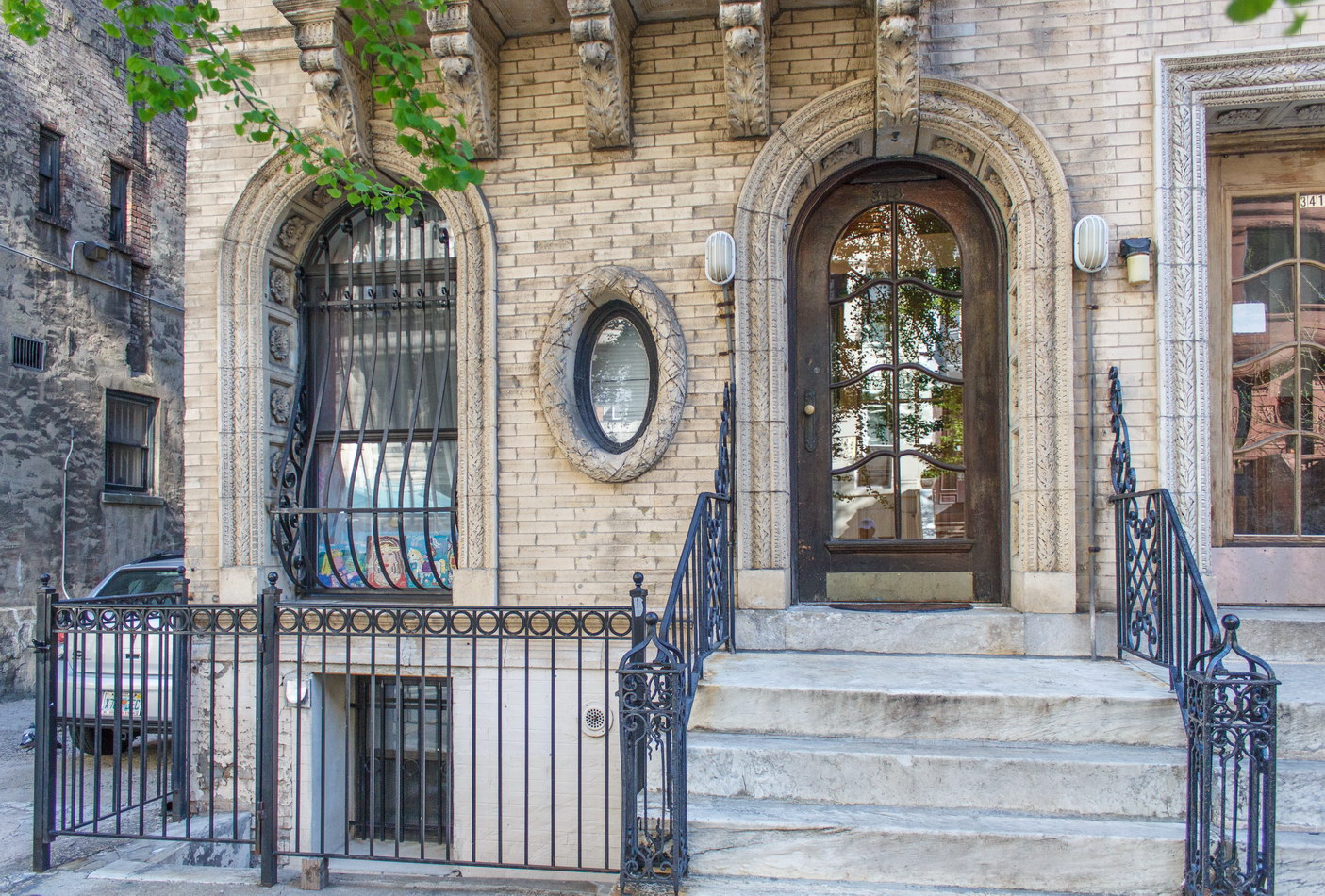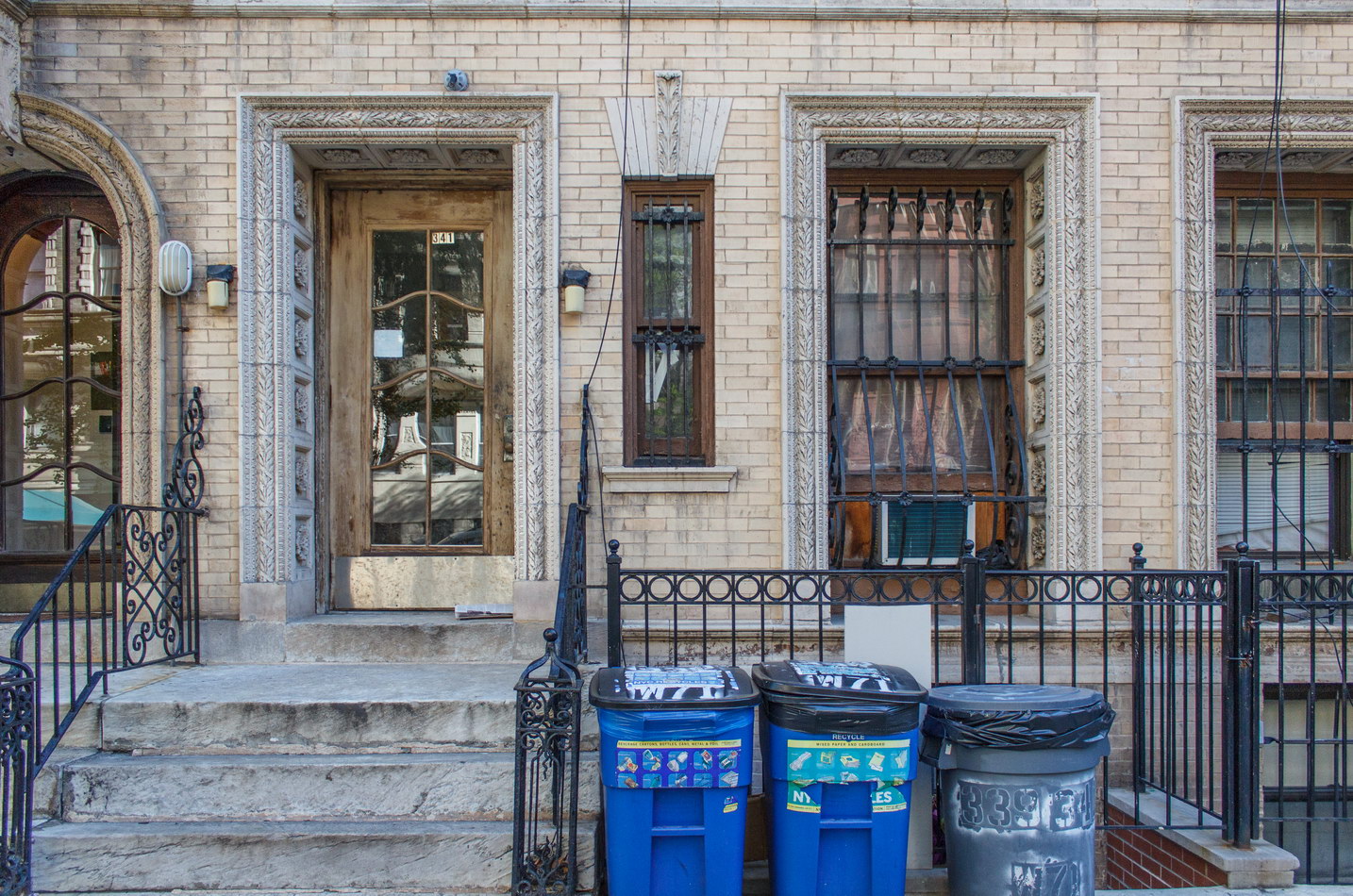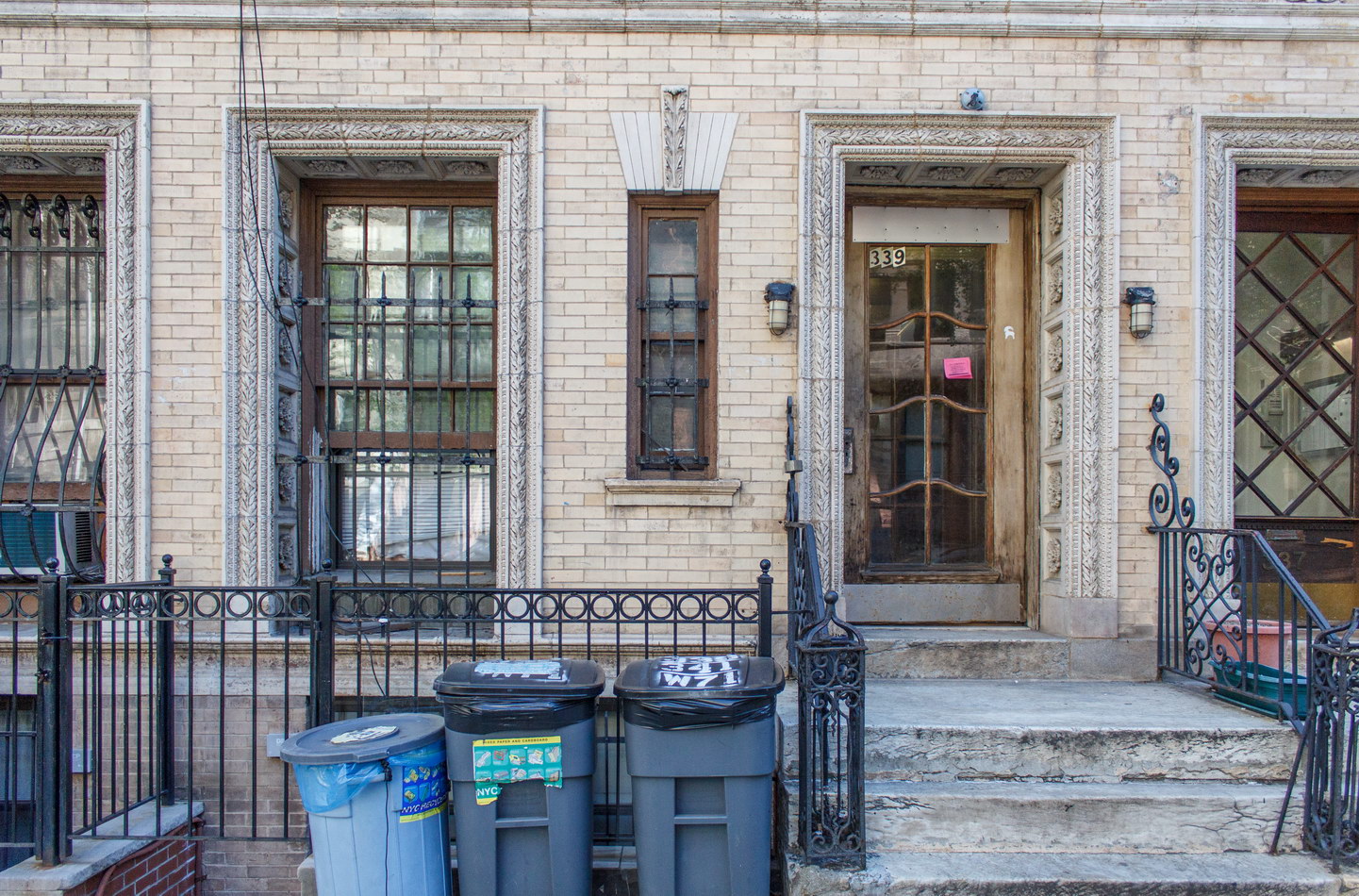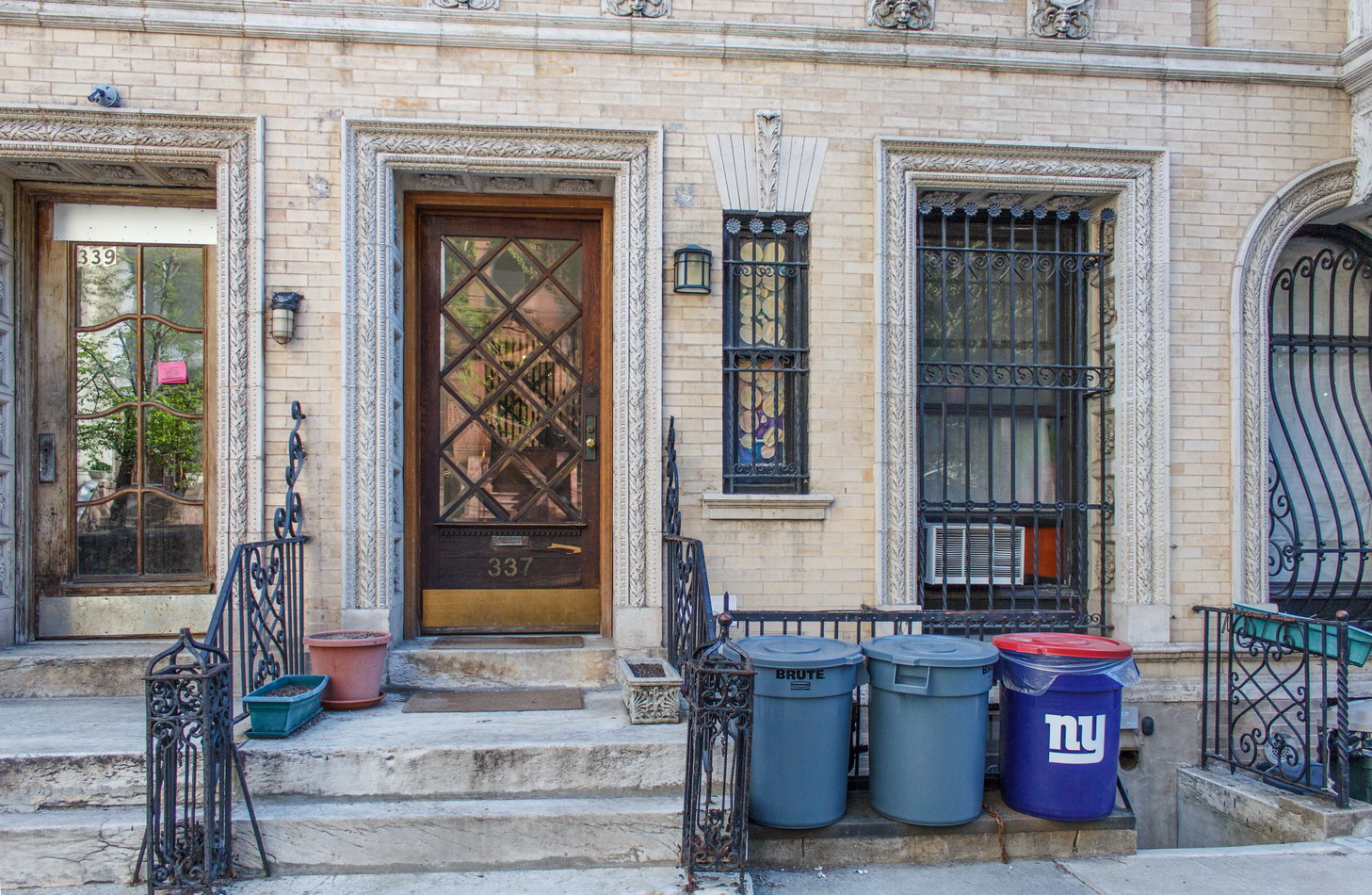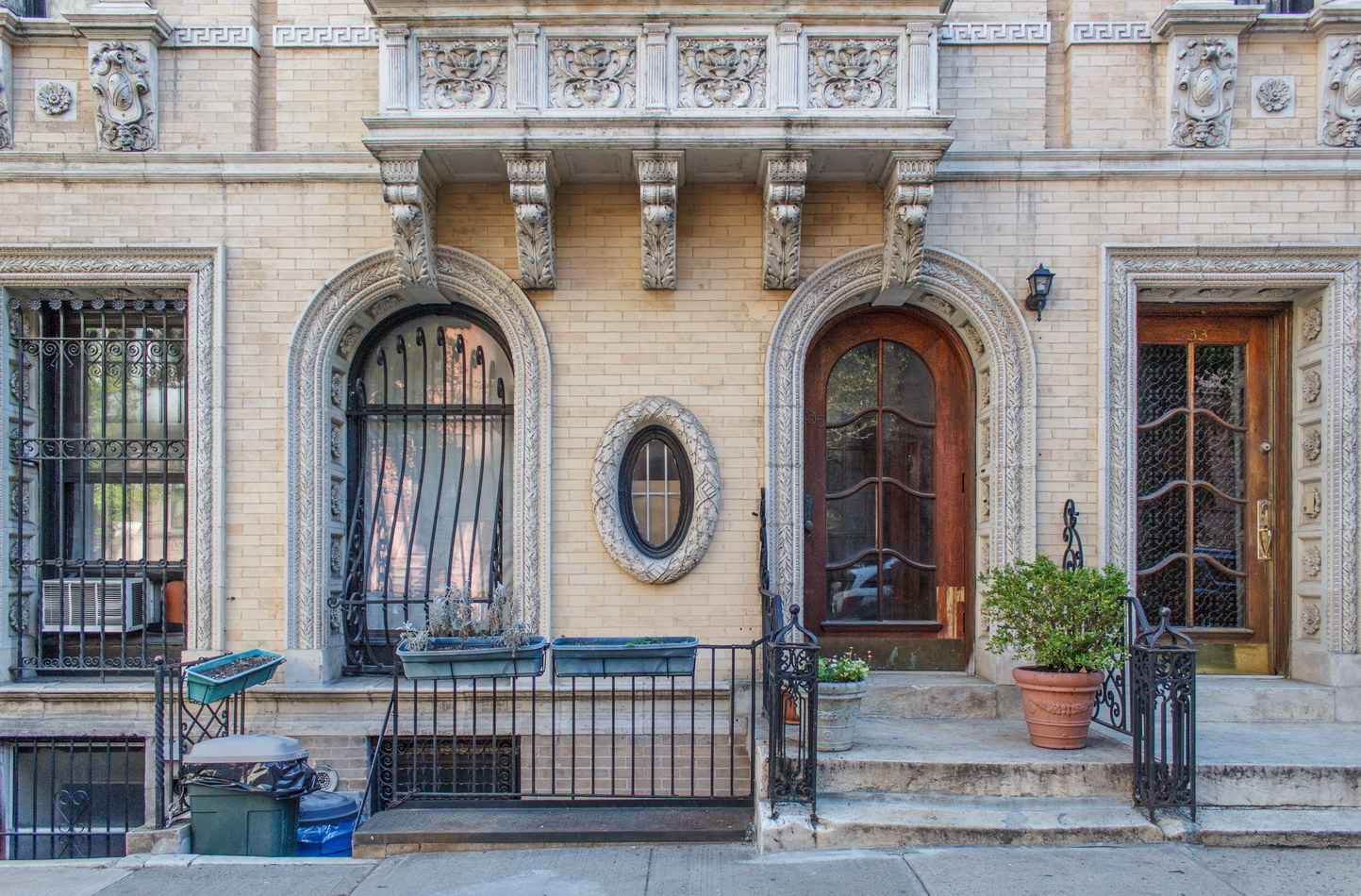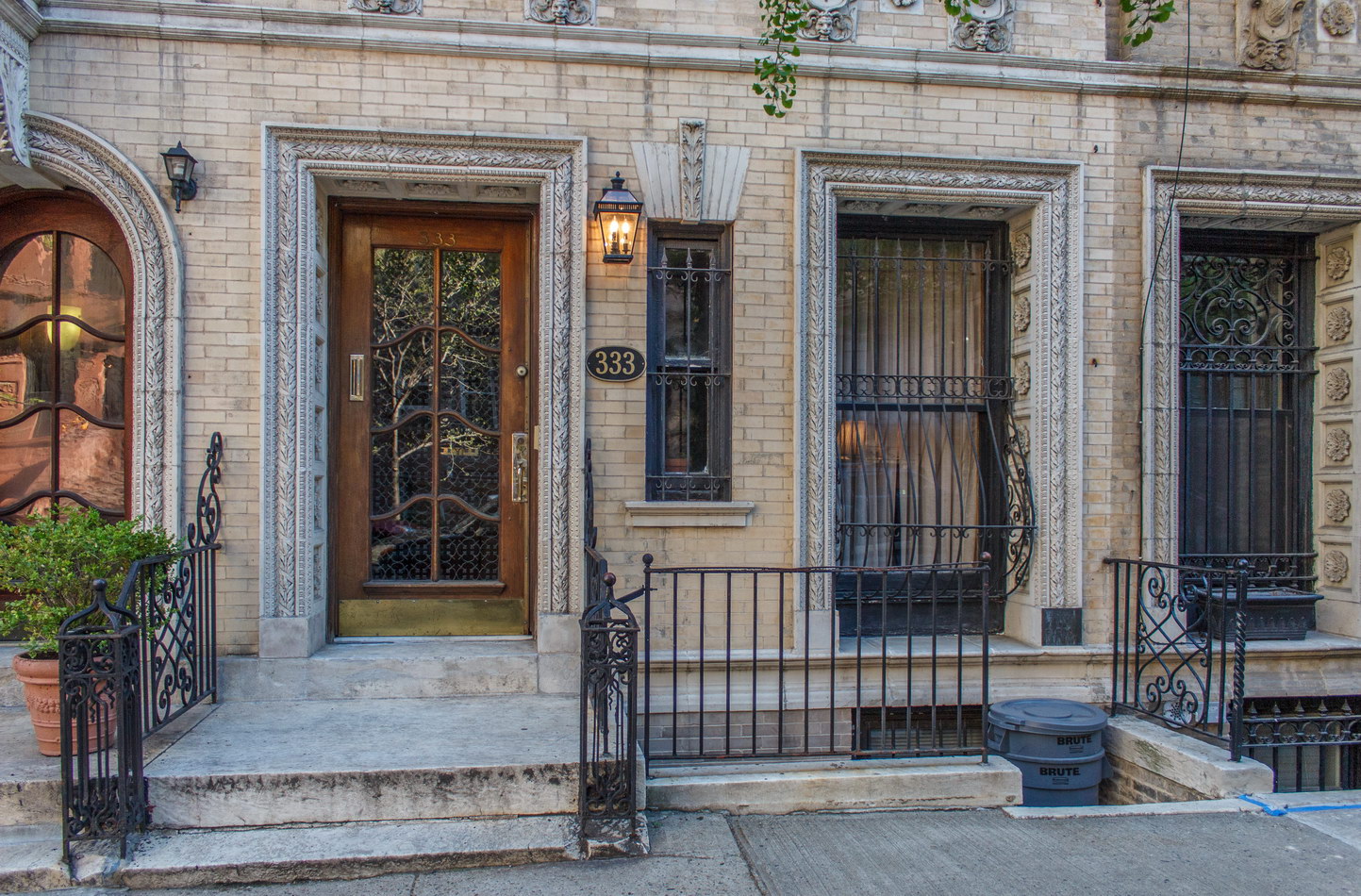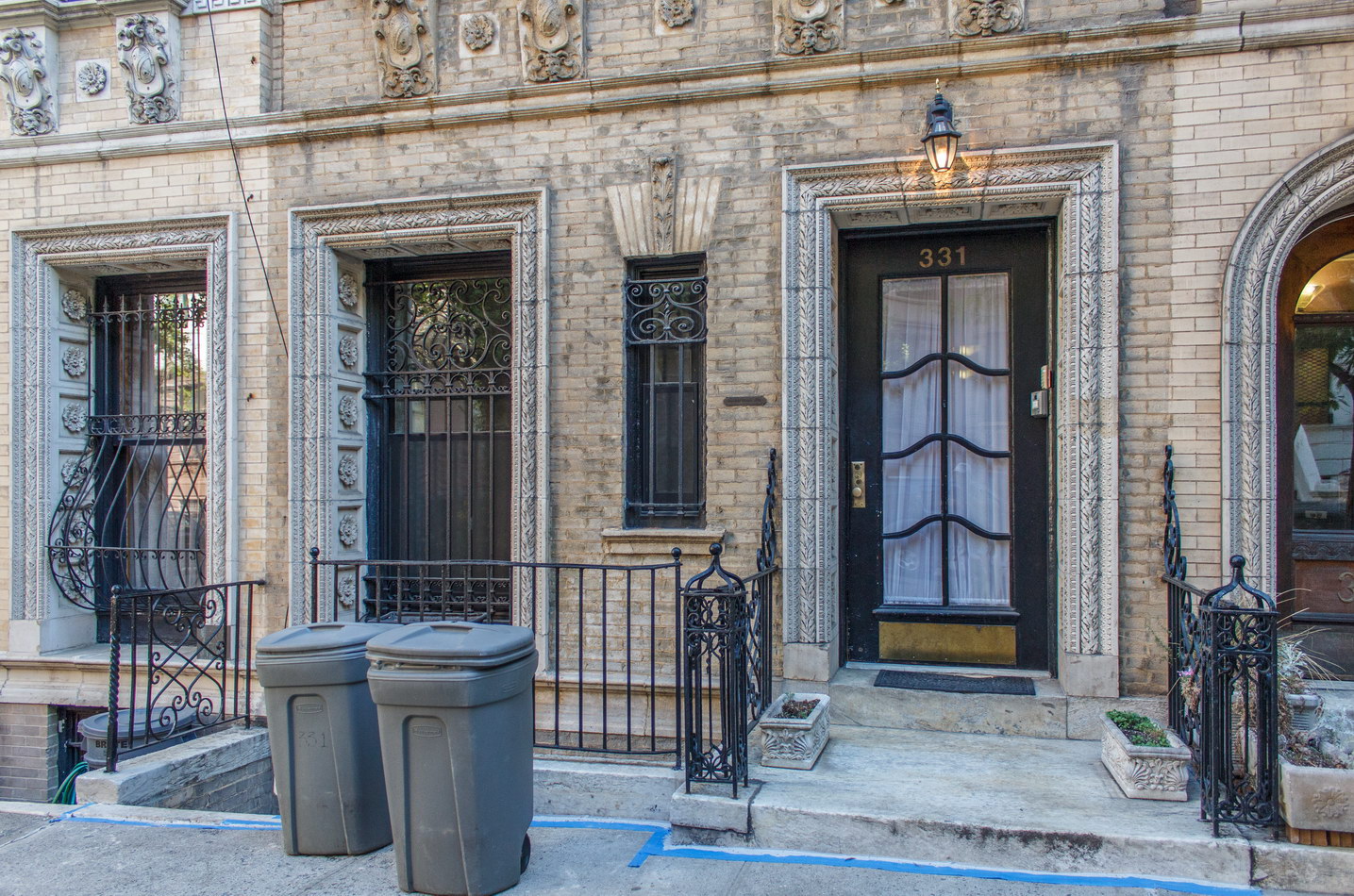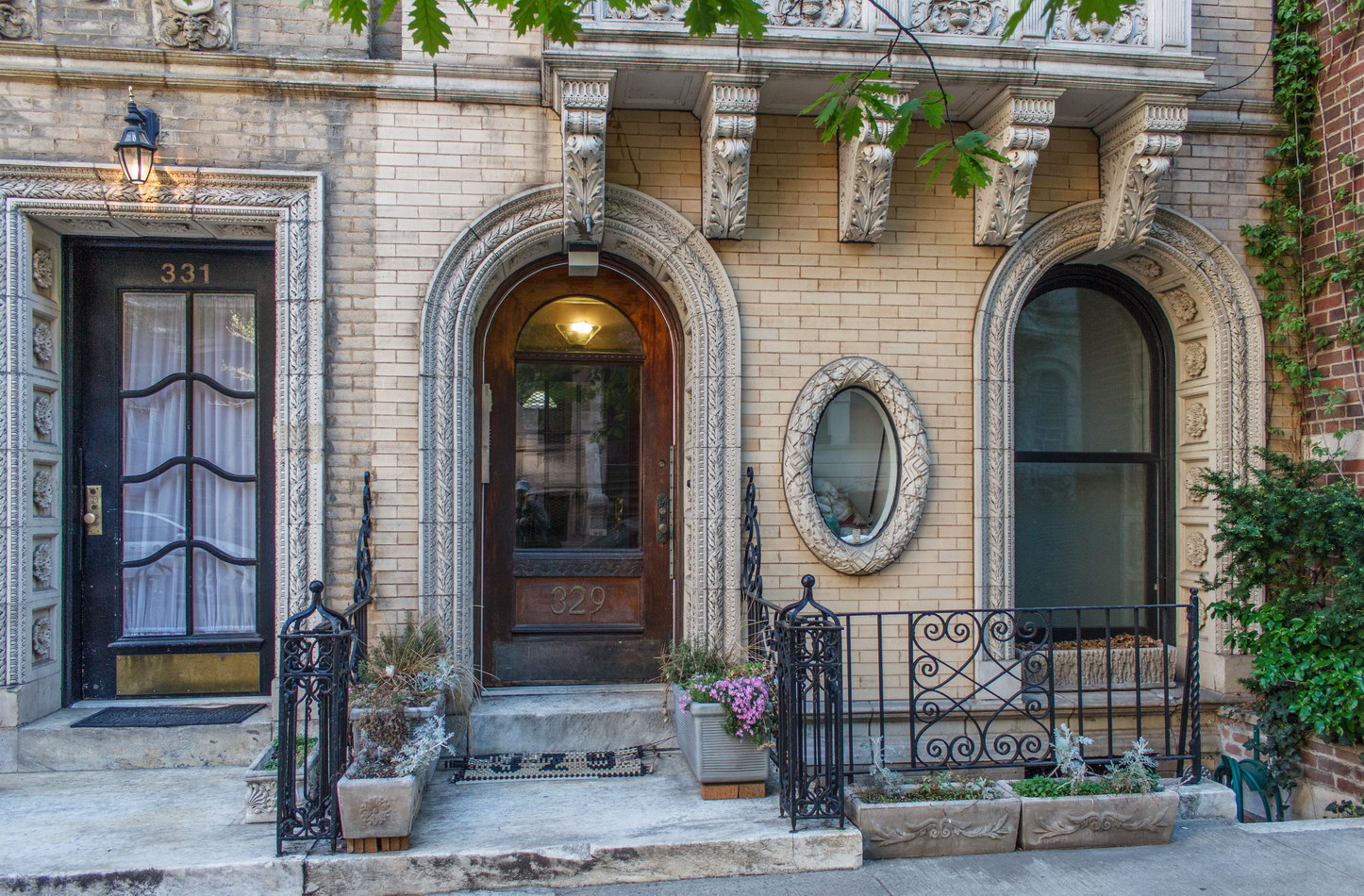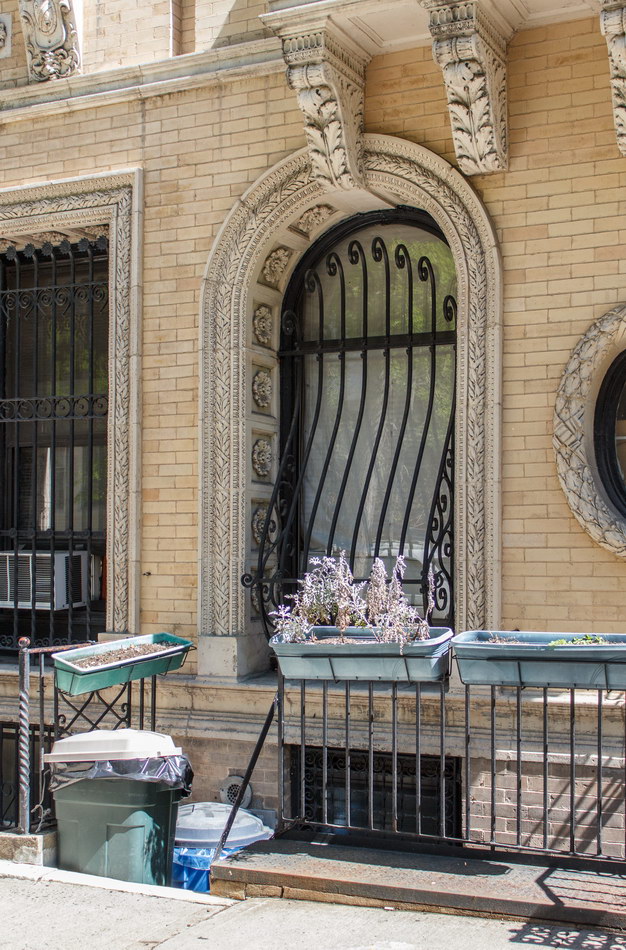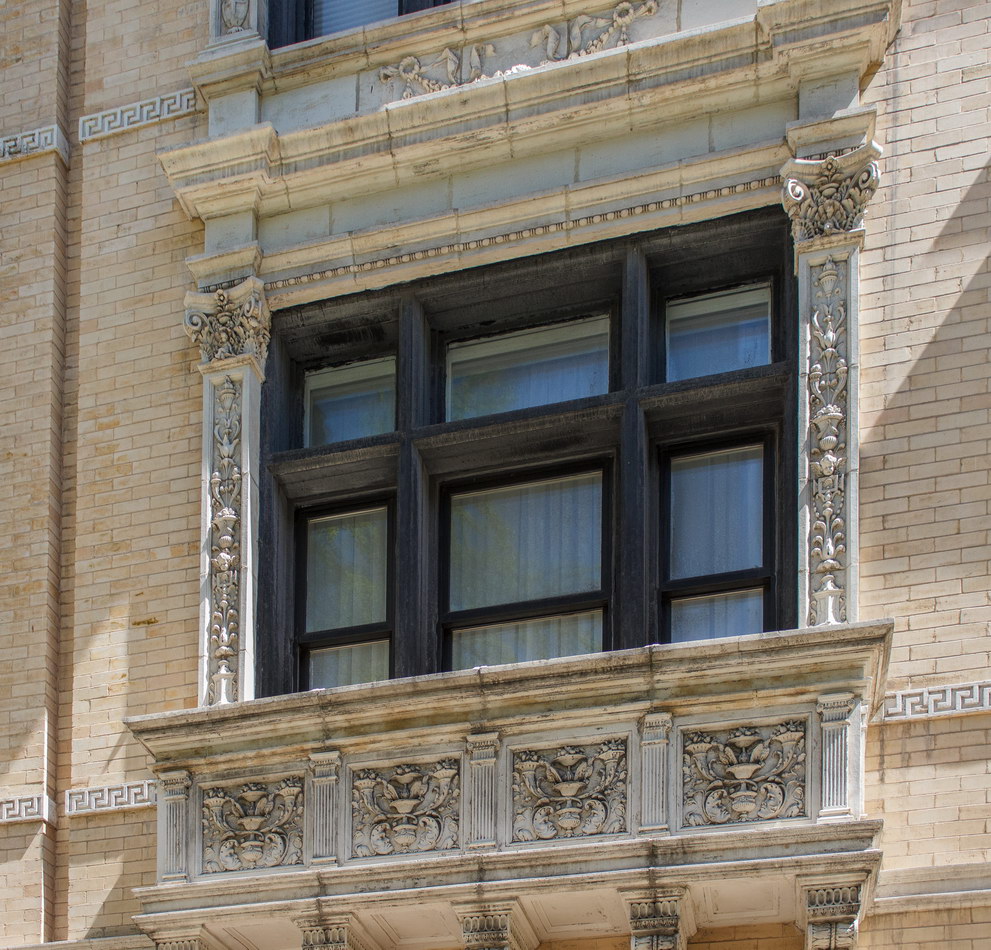West 71st Street, between West End Avenue and Riverside Boulevard, was designated a New York City Historic District in 1989, to preserve 36 buildings – principally row houses built 1893-1896 on a dead-end street.
This collection depicts eight of those houses – 329 to 343 W 71st Street – designed by Horgan & Slattery.
History does not look kindly on Horgan & Slattery; their most prominent commissions, it was charged, came from Tammany Hall connections rather than merit. This set of row houses, though private residences untainted by political connections, have been criticized as a copy of Stanford White’s Century Association Building on W 43rd Street (see The New York Times article).
Regardless of who should get credit for the design (the NYC Landmarks Preservation Commission credits Horgan & Slattery without comment), they are exceptional buildings!
The yellow/tan brick, terra cotta decoration, alternating round-arched and plain doors, oval windows, balconies, columns and pilasters – give the buildings unique character.
If you visit the block you’ll see something else that’s unique: An artificial “dead end.” Before Riverside Boulevard was created over the former West Side rail yards, W 71st was a dead end. The street now joins Riverside Boulevard, but barriers (retractable to allow emergency vehicles) make it a through street only for pedestrians. A local resident said the barriers are to maintain the street’s quiet character.
W 71st Street Row Houses Vital Statistics
- Location: 329-342 W 71st Street
- Year completed: 1895
- Architect: Horgan & Slattery
- Floors: 5
- Style: Renaissance Revival
- New York City Landmark: 1989
W 71st Street Row Houses Recommended Reading
- NYC Landmarks Preservation Commission designation report (p. 17)
- The New York Times Streetscapes column
- The New York Times Streetscapes column (architect controversy)
